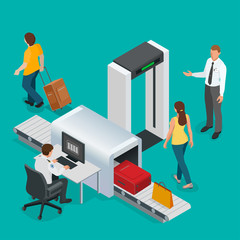As technology evolves, the need for increased security measures also grows. The Transportation Security Administration (TSA) is responsible for securing our nation’s airports and ensuring the safety of travelers. In recent years, TSA has had to adapt to the growing threat of cyber-attacks and the need for increased cybersecurity measures to protect our airports.
Air travel is a critical component of our economy, and its importance cannot be overstated. It supports millions of jobs, generates billions in revenue, and enables people to connect with each other from all corners of the globe. However, this also makes it an attractive target for hackers and cyber criminals.
The TSA is responsible for ensuring that the security of our airports is not compromised by cyber-attacks. They have implemented a variety of measures to safeguard against attacks, including enhancing their cybersecurity protocols, investing in advanced cybersecurity tools, and collaborating with other agencies to share threat intelligence.
One of the biggest challenges facing the TSA is the growth of the Internet of Things (IoT). This technology connects devices to the internet, allowing them to communicate with each other and share data. While it offers many benefits, it also increases the risk of cyber-attacks. Many airports have implemented IoT devices to improve the passenger experience, such as smart kiosks or check-in counters. However, these devices can also be targeted by hackers, potentially compromising passenger data or even airport systems.
TSA has also been working to improve the security of their own IT systems. In 2018, they launched a bug bounty program, offering rewards to ethical hackers who identified vulnerabilities in their systems. This program has been successful in identifying potential weaknesses and helping TSA to strengthen its cybersecurity defenses.
However, cybersecurity is a constantly evolving field, and the TSA must remain vigilant in the face of new and emerging threats. They must continue to invest in their cybersecurity capabilities and work closely with the broader cybersecurity community to stay ahead of potential attackers.
In conclusion, cybersecurity is a crucial component of the TSA’s efforts to protect our nation’s airports. With the growth of the IoT and the increasing sophistication of cyber attackers, it is essential that the TSA remains proactive in addressing these issues. As travelers, we can do our part by remaining vigilant and adhering to TSA security guidelines, which help ensure a safe and secure air travel experience.

